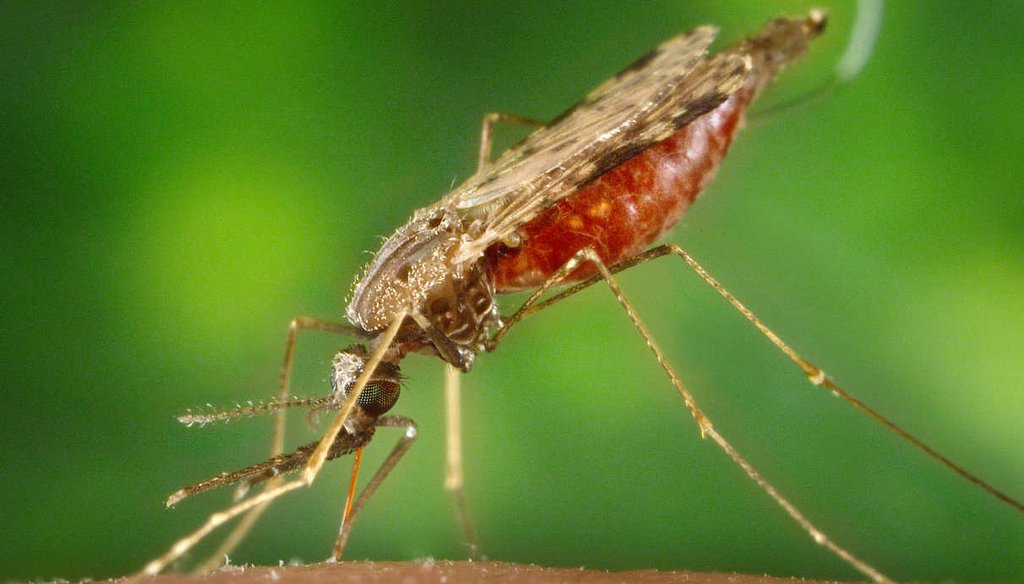Stand up for the facts!
Our only agenda is to publish the truth so you can be an informed participant in democracy.
We need your help.
I would like to contribute

A female Anopheles albimanus mosquito, a common vector of malaria in Central Americ, feeding on a human host. (Penn State)
Disease. Caused by parasites that are transmitted to people through the bites of infected female mosquitoes.
Impact. In 2015 an estimated 214 million cases of malaria occurred worldwide and 438,000 people died, mostly children. In areas with high transmission, the most vulnerable groups are young children, who have not developed immunity to malaria yet, and pregnant women, whose immunity has been decreased by pregnancy.
Where in the world? In 2015, less than 100 countries and territories had ongoing malaria transmission with highest risk found in Africa South of the Sahara and in parts of Oceania such as Papua New Guinea. Sub-Saharan Africa carries a disproportionately high share of the global malaria burden.
*Source: Iamat.org
Symptoms. Fever, chills, body aches, nausea and vomiting, headaches. Left untreated may develop severe complications and die but it is a curable disease if diagnosed and treated promptly and correctly. Symptoms usually appear between 10 and 15 days after the mosquito bite.
Treatment and prevention. The use of insecticide-treated mosquito nets and indoor residual spraying, diagnostic testing, and treatment of confirmed cases with effective antimalarial medicines.
In the United States. Malaria was eliminated in the early 1950s but approximately 1,500-2,000 cases of malaria are reported every year in the United States, almost all in recent travelers.
Travelling? Many effective antimalarial drugs are available. Drug if any should be chosen based on travel plans, medical history, age, drug allergies, pregnancy status, and other factors.
Elimination. In recent years, 5 countries have been certified by the WHO Director-General as having eliminated malaria: United Arab Emirates (2007), Morocco (2010), Turkmenistan (2010), Armenia (2011) and Maldives (2015).
Recently 3 other countries started the certification process: Argentina, Kyrgyzstan and Sri Lanka.
Costs. In Africa alone, the cost of illness, treatment, and premature death from malaria are at least $12 billion per year, according to the Centers for Disease Control and Prevention.
U.S. government funding. Funding for malaria control, research and other efforts has increased from $146 million in FY 2001 to $861 million in FY 2016. President Barack Obama’s request for the next fiscal year is 8 percent higher.
Our Sources
Kaiser Family Foundation The U.S. Government and Global Malaria Efforts, accessed on May 18, 2016
World Health Organization, Malaria, accessed on May 17, 2016
Centers for Disease Control and Prevention, Malaria, March 11, 2016
International Association for Medical Assistance to Travellers, World Malaria Day 2016: Updates for travellers, April 25, 2016
Photo credit: James Gathany, Penn State, published under Flickr.com Creative Commons license, January 15, 2014


























